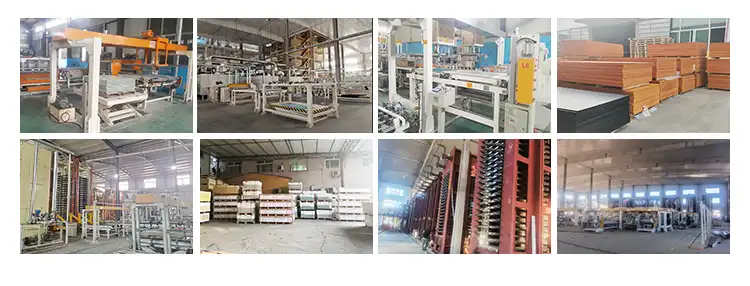The Science Behind Epoxy Resin Hardness
Molecular Structure and Cross-linking
At the heart of epoxy resin's hardness lies its molecular structure. Epoxy resins are thermoset polymers, characterized by a network of covalent bonds that form during the curing process. This three-dimensional network of cross-linked molecules is responsible for the material's rigidity and resistance to deformation.
The degree of cross-linking directly correlates with the hardness of the cured epoxy. Higher cross-link density typically results in increased hardness, as the tightly bound molecular structure resists indentation and penetration. However, it's crucial to note that excessive cross-linking can lead to brittleness, highlighting the delicate balance required in formulation.
Curing Mechanisms and Hardness Development
The curing process is a critical phase in the development of epoxy resin hardness. During curing, epoxy monomers react with hardeners or catalysts, initiating the formation of cross-links. This process can be accelerated by heat or UV light, depending on the specific formulation.
As curing progresses, the epoxy transitions from a liquid to a gel state and finally to a solid. The rate and completeness of this curing process significantly impact the final hardness. Incomplete curing can result in softer, less durable epoxy, while over-curing may lead to excessive brittleness.
Measuring Epoxy Resin Hardness
Several methods exist for quantifying the hardness of cured epoxy resins. The Shore Durometer test is commonly employed, with Shore D scale typically used for harder epoxies. This test measures the resistance of the material to indentation by a standardized probe.
Alternative methods include the Rockwell hardness test and the Barcol hardness test, each offering unique insights into the material's resistance to deformation. These measurements provide valuable data for quality control and material selection in various applications.
Factors Influencing Epoxy Resin Hardness
Resin and Hardener Composition
The chemical composition of both the epoxy resin and the hardener significantly influences the final hardness of the cured material. Different epoxy types, such as bisphenol A diglycidyl ether (DGEBA) or novolac epoxies, exhibit varying hardness potentials.
Similarly, the choice of hardener, whether amine-based, anhydride-based, or others, affects the cross-linking density and, consequently, the hardness. Manufacturers often fine-tune these components to achieve desired hardness levels for specific applications.
Curing Conditions and Parameters
The conditions under which epoxy resin cures play a crucial role in determining its final hardness. Temperature, humidity, and curing time are key parameters that influence the cross-linking process and, by extension, the hardness of the cured epoxy.
Higher curing temperatures generally accelerate the cross-linking reaction, potentially leading to increased hardness. However, precise control is necessary to prevent thermal degradation or incomplete curing, which could compromise the desired hardness.
Fillers and Additives
The incorporation of fillers and additives can dramatically alter the hardness profile of epoxy resins. Inorganic fillers like silica or aluminum oxide can enhance hardness and wear resistance, while elastomeric modifiers might be used to improve impact resistance at the expense of some hardness.
Nanofillers, such as carbon nanotubes or graphene, have shown promise in enhancing both hardness and toughness simultaneously, opening new avenues for high-performance epoxy formulations.
Applications and Implications of Epoxy Resin Hardness
Industrial and Engineering Applications
The hardness of epoxy resins finds critical importance in numerous industrial applications. In protective coatings, hard epoxy formulations provide excellent resistance to abrasion and chemical attack, prolonging the lifespan of underlying substrates.
In the aerospace and automotive industries, epoxy-based composites with tailored hardness properties offer lightweight yet durable alternatives to traditional materials. The ability to fine-tune hardness allows engineers to optimize components for specific stress profiles and environmental conditions.
Electronics and Electrical Insulation
In the realm of electronics, epoxy resin hardness plays a dual role. Hard epoxy encapsulations protect sensitive electronic components from mechanical damage and environmental factors. Simultaneously, the electrical insulation properties of epoxy resins, often correlated with their hardness, are crucial for preventing short circuits and ensuring the longevity of electronic devices.
For insulating sheets, a balance between hardness and flexibility is often sought to provide both protection and ease of installation. This balance is particularly crucial in high-voltage applications where material integrity is paramount.
Emerging Trends and Future Prospects
The frontier of epoxy resin hardness research is expanding rapidly. Advancements in polymer science are paving the way for "smart" epoxies with tunable hardness properties. These materials could potentially adapt their hardness in response to environmental stimuli, opening up new possibilities in adaptive structures and self-healing materials.
Moreover, the push towards sustainable materials is driving research into bio-based epoxy resins. Understanding and optimizing the hardness of these eco-friendly alternatives presents both challenges and opportunities for material scientists and engineers alike.
Conclusion
Understanding the hardness of epoxy resin from a material science perspective unveils a complex interplay of molecular structure, curing dynamics, and formulation intricacies. This knowledge is instrumental in tailoring epoxy resins for diverse applications, from robust industrial coatings to precise electronic encapsulations. As research continues to push the boundaries of epoxy science, the ability to control and enhance hardness properties will undoubtedly lead to innovative solutions across various technological domains. The future of epoxy resin hardness lies in the synergy between fundamental material science and cutting-edge engineering applications.
Contact Us
For more information about our high-quality insulating sheets and epoxy resin products, please don't hesitate to contact us at info@jhd-material.com. Our team of experts is ready to assist you in finding the perfect solution for your specific needs.






